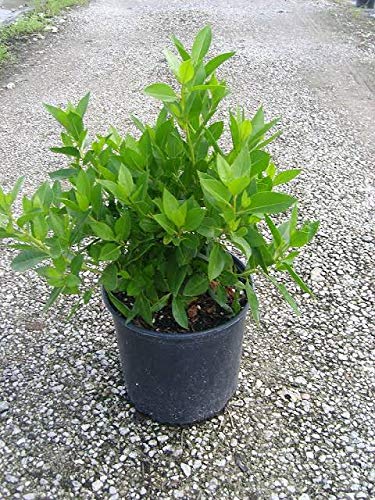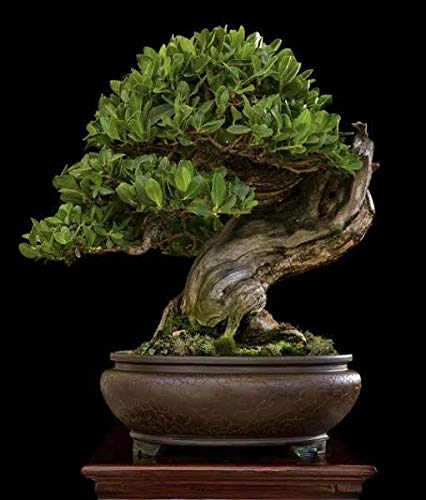

Conocarpus button Wood Live Plant With Polybag for Bonsai Trainning Topiary Making and Fast Hedging Live Healthy Sapling Plant
Guaranteed Safe Checkout
Green Paradise Conocarpus Buttonwood: Nature's
Resilient Coastal Sculptor
About Conocarpus Buttonwood Plant
In the realm of coastal landscapes, where the relentless dance of wind and saltwater prevails, the Conocarpus buttonwood plant stands as an emblem of resilience and adaptability. This remarkable plant, with its unique characteristics and ecological significance, weaves a story of survival and ecological harmony along the shores it calls home.
The Botanical Marvel
- Conocarpus erectus, commonly known as buttonwood, is a versatile coastal plant species belonging to the Combretaceae family.
- Native to various coastal regions around the world, from the Americas to Africa and Asia, the Conocarpus genus consists of evergreen shrubs and trees, with Conocarpus erectus being one of the most iconic members.
Characteristics
- What distinguishes the Conocarpus buttonwood is its extraordinary capacity to flourish in the harshest of coastal environments.
- With an exceptional tolerance for saline soil and salt-laden winds, it stands as a sentinel against the erosive forces of nature.
- Its distinctive twisted, gnarled, and contorted growth patterns are a testament to its enduring battle with coastal elements.
- The leaves are small, oval-shaped, and possess a unique leathery texture that helps reduce water loss, making it an ideal survivor in arid coastal climates.
Ecological Significance
- The Conocarpus buttonwood plant is an ecological linchpin in its habitat.
- Its intricate root systems serve as a natural barrier against shoreline erosion, providing protection for delicate coastal ecosystems against the pounding waves.
- This root network not only stabilizes the shoreline but also acts as a vital nursery for various marine species, making it a cornerstone for biodiversity in these dynamic environments.
Coastal Companion
- In many coastal communities, the Conocarpus buttonwood has become an essential part of the landscape, both for its environmental benefits and aesthetic appeal.
- Its distinctive growth forms and vibrant green foliage offer a striking contrast to the backdrop of sand and sea, transforming beaches into captivating vistas.
- These qualities have endeared it to landscape architects and homeowners seeking to create picturesque coastal gardens that thrive despite the harsh conditions.
Cultural Connections
- Beyond its ecological and ornamental roles, the Conocarpus buttonwood has forged cultural connections in various regions.
- In some places, it holds traditional medicinal uses, while in others, it has found its way into folklore and art.
- Its presence in coastal literature and local stories further cements its significance as more than just a plant—it's a living link between nature and culture.
Challenges and Conservation
- While the Conocarpus buttonwood's resilience is commendable, it's not invincible.
- The encroachment of human development, habitat destruction, and invasive species pose challenges to its survival.
- Conservation efforts that focus on preserving coastal habitats and raising awareness about the importance of native plants are crucial to ensuring the continued existence of this vital coastal species.
Mastering the Art of Conocarpus Buttonwood Plant
Cultivation
The allure of gardening lies in the ability to nurture and witness the growth of diverse plant species. Among these, the Conocarpus buttonwood, with its captivating appearance and adaptability, stands as an ideal choice for both novice and seasoned gardeners. Native to coastal regions and known for its remarkable resilience, the Conocarpus buttonwood plant offers a gratifying experience to those who embark on its cultivation journey.
Understanding the Conocarpus Buttonwood
- The Conocarpus buttonwood, scientifically classified as Conocarpus erectus, is a versatile evergreen shrub or small tree that belongs to the Combretaceae family.
- Its common name, "buttonwood," originates from the small, round, button-like fruits it produces.
- This plant is well-suited to coastal landscapes due to its tolerance to salt spray and windy conditions.
- Its unique combination of salt resistance, aesthetic appeal, and low-maintenance qualities makes it a popular choice for gardens in coastal regions.
Cultivation Steps
Selecting the Right Location:
Before embarking on the cultivation of Conocarpus buttonwood, carefully choose the planting location. This plant thrives in full sunlight but can tolerate partial shade. Coastal areas with well-draining soil are ideal, as they mimic its natural habitat.
Preparing the Soil:
Well- draining soil is pivotal for the health of Conocarpus aeroplane . Amend the soil with organic matter to enhance its structure and drainage capabilities. The plant can tolerate slightly alkaline to slightly acidic soil conditions.
Planting Process:
Spring or early fall is the best time to plant Conocarpus buttonwood. Dig a hole that's slightly larger than the root ball of the factory. Place the factory in the hole, icing that the top of the root ball is position with the soil face. Fill the hole with soil, gently stroke it down, and water completely.
Watering:
While Conocarpus buttonwood is drought-tolerant once established, regular watering is essential during its initial growth phase. Water deeply but rarely to encourage deep root growth. Once the plant is established, reduce watering frequency.
Pruning and Shaping:
Pruning can help maintain the desired shape and size of the plant. It's recommended to prune during the dormant season to avoid interfering with new growth. Remove any dead or damaged branches and shape the plant as desired.
Fertilization:
Conocarpus buttonwood typically doesn't require frequent fertilization. However, a balanced, slow-release fertilizer applied in spring can provide the necessary nutrients for healthy growth. Avoid over-fertilization, as it can lead to excessive foliage growth and reduced tolerance to salt spray.
Mulching:
Applying a layer of organic mulch around the base of the plant helps retain moisture, regulate soil temperature, and discourage weed growth. Keep the mulch a many elevation down from the box to help humidity- related issues.
Pest and Disease Management:
Generally, Conocarpus buttonwood is resistant to most pests and diseases. However, regular observation is essential to catch and address any issues early. In particular, keep an eye out for aphids, scale insects, and fungal diseases in humid conditions.
Conclusion
Cultivating the Conocarpus buttonwood plant can be an enriching experience for any gardener. Its striking appearance, coupled with its remarkable adaptability to coastal conditions, makes it a remarkable addition to gardens and landscapes. By following the right planting and care techniques, you can watch this plant thrive and become a testament to your gardening prowess, all while contributing to the beauty and diversity of your outdoor space.




